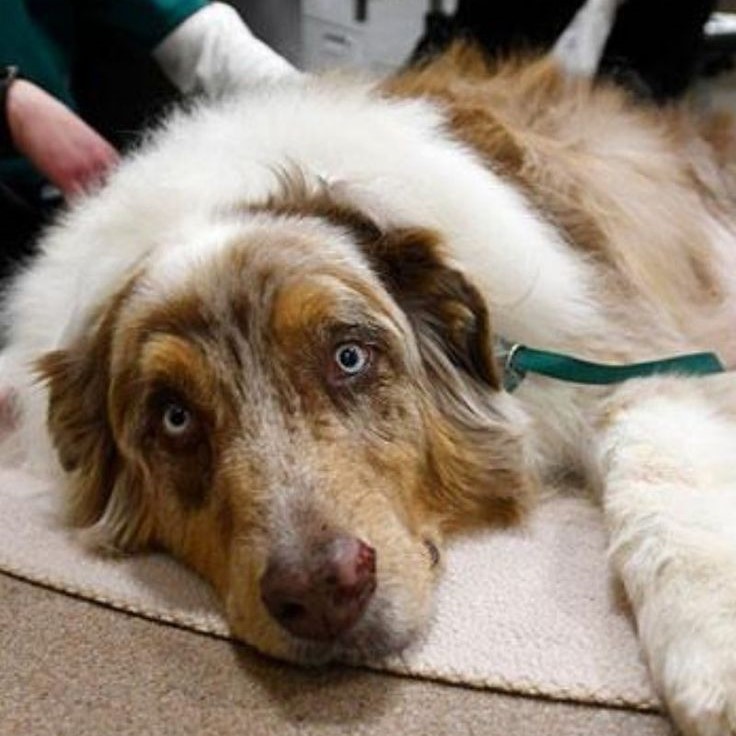Understanding Vestibular Disease in Dogs
Vestibular disease in dogs is a condition that affects the inner ear and brain, causing balance issues and disorientation. This disorder can be confusing for both the dog and the owner. If you’re asking can vestibular disease kill a dog, it’s important to know that while it can be alarming, it’s not always life-threatening. However, it can lead to complications if left untreated.
One of the main reasons people are concerned about can vestibular disease kill a dog is because of the sudden and dramatic symptoms. Dogs may fall, walk in circles, or show signs of nausea. These behaviors can make it seem like something more serious is happening.

Another factor is the age of the dog. Vestibular disease is more common in older dogs, which makes it more concerning for many pet owners. It’s important to understand that can vestibular disease kill a dog depends on the underlying cause and how quickly it’s treated.
The condition can be caused by various factors, including infections, tumors, or even medications. Identifying the cause is crucial for proper management and treatment.
So, if you’re wondering can vestibular disease kill a dog, now is the time to learn more about this condition and how to support your pet.
What Causes Vestibular Disease in Dogs?
Vestibular disease in dogs can have several causes. One of the most common is an inner ear infection. These infections can affect the dog’s sense of balance and lead to sudden symptoms. Another possible cause is a tumor in the ear or brain. While rare, these growths can interfere with the nervous system.
Some medications can also trigger vestibular disease in dogs. For example, certain antibiotics or drugs used for seizures may have side effects that impact the dog’s balance. This is one reason why what causes vestibular disease in dogs is a question many owners ask.
In addition, some dogs may develop idiopathic vestibular disease. This means the cause is unknown, but the symptoms are similar to those of other types. This type is often seen in older dogs and can appear suddenly.
It’s also worth noting that the condition can be triggered by head trauma or neurological issues. These cases require immediate attention and medical care.
Understanding what causes vestibular disease in dogs helps you recognize the risk factors and take steps to protect your pet.
Symptoms of Vestibular Disease in Dogs
The symptoms of vestibular disease in dogs can be alarming, but they are usually temporary. Common signs include loss of balance, head tilting, and difficulty walking. These symptoms can come on suddenly, making it hard for the owner to know what to do.

Another symptom is nystagmus, which is the involuntary movement of the eyes. This is a clear sign that the dog is experiencing vestibular issues. It’s important to monitor your dog closely if you notice this.
Dogs with vestibular disease may also experience nausea or vomiting. They might feel dizzy or unsteady, which can make them act confused or disoriented. This is one of the symptoms of vestibular disease in dogs that should not be ignored.
Other signs include circling, falling over, and difficulty standing. These symptoms can last for hours or even days, depending on the cause.
If you see any of these symptoms of vestibular disease in dogs, it’s best to consult a vet as soon as possible.
With the right care, most dogs recover fully from this condition.
Is Vestibular Disease in Dogs Fatal?
Many pet owners ask is vestibular disease in dogs fatal. The answer is not straightforward. In most cases, the condition is not deadly, but it can be serious if it’s caused by a tumor or other underlying issues. Early diagnosis and treatment are key to ensuring the best outcome.
One of the main concerns is the sudden onset of symptoms. This can be scary, but it doesn’t always mean the dog is in danger. Most dogs with vestibular disease recover within a few weeks. However, some cases may require more intensive care.
Another factor is the dog’s overall health. A strong, healthy dog has a better chance of recovery than one with existing conditions. This is why can vestibular disease kill a dog depends on many factors, including the cause and the dog’s response to treatment.
It’s also important to note that while vestibular disease can be distressing, it’s not typically life-threatening. Most dogs go on to live normal lives after recovery.
However, if the condition is due to a severe illness, it can become dangerous. This is why monitoring and veterinary care are so important.
So, is vestibular disease in dogs fatal? It can be, but only in rare cases and usually when it’s linked to other serious conditions.

How to Treat Vestibular Disease in Dogs
Treating vestibular disease in dogs involves identifying the cause and providing the right care. If the condition is due to an ear infection, antibiotics are often prescribed. This is one of the how to treat vestibular disease in dogs that can help speed up recovery.
Another treatment option is anti-nausea medication. These drugs can reduce dizziness and prevent vomiting. This is especially helpful for dogs who are feeling sick or unwell.
In some cases, a vet may recommend rest and supportive care. This includes keeping the dog safe and comfortable during the recovery period. This is one of the how to treat vestibular disease in dogs that many owners use at home.
Physical therapy may also be part of the how to treat vestibular disease in dogs. This helps improve balance and mobility over time.
Finally, regular check-ups are important. Monitoring the dog’s progress ensures that the treatment is working and that no new issues arise.
With the right approach, how to treat vestibular disease in dogs can lead to a full recovery.
Can Vestibular Disease Kill a Dog?
Pet owners often wonder can vestibular disease kill a dog. The short answer is that it rarely does. Most dogs recover without long-term damage. However, it’s important to understand the risks and how to respond.
One reason this condition is concerning is its sudden appearance. Dogs may seem fine one moment and then show severe symptoms. This can be frightening, but it doesn’t always mean the dog is in danger.
Another concern is the possibility of complications. If the disease is caused by a tumor or neurological issue, it may be more serious. This is why can vestibular disease kill a dog depends on the underlying cause.
Early treatment is crucial. Prompt action can prevent further issues and improve the chances of recovery. This is one of the how to treat vestibular disease in dogs that many vets recommend.
It’s also important to provide comfort and support. Keeping the dog safe and reducing stress helps speed up the healing process. This is part of the how to treat vestibular disease in dogs that many owners follow.
With the right care, can vestibular disease kill a dog is a rare outcome. Most dogs recover fully and return to their normal activities.
Recognizing the Signs of Vestibular Disease
Recognizing the symptoms of vestibular disease in dogs is the first step in helping your pet. If you notice your dog acting strangely, it’s important to act quickly. Sudden changes in behavior or movement can indicate this condition.

One of the most common signs is a head tilt. This is a clear indicator that the dog is having trouble with balance. Other signs include circling, falling, or difficulty standing. These symptoms can be very noticeable and concerning.
You should also watch for nausea or vomiting. This is a sign that the dog is feeling unwell. It’s important to seek help if you see any of these symptoms of vestibular disease in dogs.
Dogs with this condition may also show confusion or disorientation. They may seem lost or unresponsive to commands. This is one of the symptoms of vestibular disease in dogs that requires attention.
If your dog shows any of these signs, don’t wait—consult a vet immediately. This is part of the how to treat vestibular disease in dogs that can save your pet’s health.
By being aware of symptoms of vestibular disease in dogs, you can act faster and get the help your dog needs.
When to Seek Veterinary Help
If you’re unsure about can vestibular disease kill a dog, it’s best to consult a vet. This is especially true if the symptoms persist or worsen. Early intervention can make a big difference in the how to treat vestibular disease in dogs and prevent complications.
One reason to see a vet is if the dog shows signs of pain or discomfort. This can indicate a more serious issue that needs medical attention. It’s important to rule out other conditions that could be mistaken for vestibular disease.
Another reason is if the dog has a history of ear problems. This can be a sign of an underlying infection that needs treatment. This is one of the what causes vestibular disease in dogs that should not be ignored.
If the symptoms last longer than a few days, it’s time to seek help. This is one of the how to treat vestibular disease in dogs that many owners overlook.
Also, if your dog shows signs of dehydration or refuses to eat, it’s a red flag. This can indicate a more serious issue that requires professional care.
Don’t hesitate to contact a vet if you’re worried about can vestibular disease kill a dog. Quick action can make all the difference in your dog’s recovery.
Conclusion
In conclusion, can vestibular disease kill a dog is a question many pet owners ask. The answer is that it’s rare, but not impossible. With the right care, most dogs recover fully from this condition. We’ve explored what causes vestibular disease in dogs, discussed symptoms of vestibular disease in dogs, and answered whether it’s is vestibular disease in dogs fatal. We’ve also shared how to treat vestibular disease in dogs and explained the importance of early recognition and treatment.

Whether you’re a first-time dog owner or an experienced pet parent, understanding can vestibular disease kill a dog is essential. It helps you act quickly and ensure your dog gets the care it needs.
So, if you’re asking can vestibular disease kill a dog, don’t panic. With the right knowledge and actions, you can support your dog through this condition. Remember, can vestibular disease kill a dog only in rare cases, and prompt treatment improves the chances of a full recovery. Always stay informed and proactive when it comes to your dog’s health.









